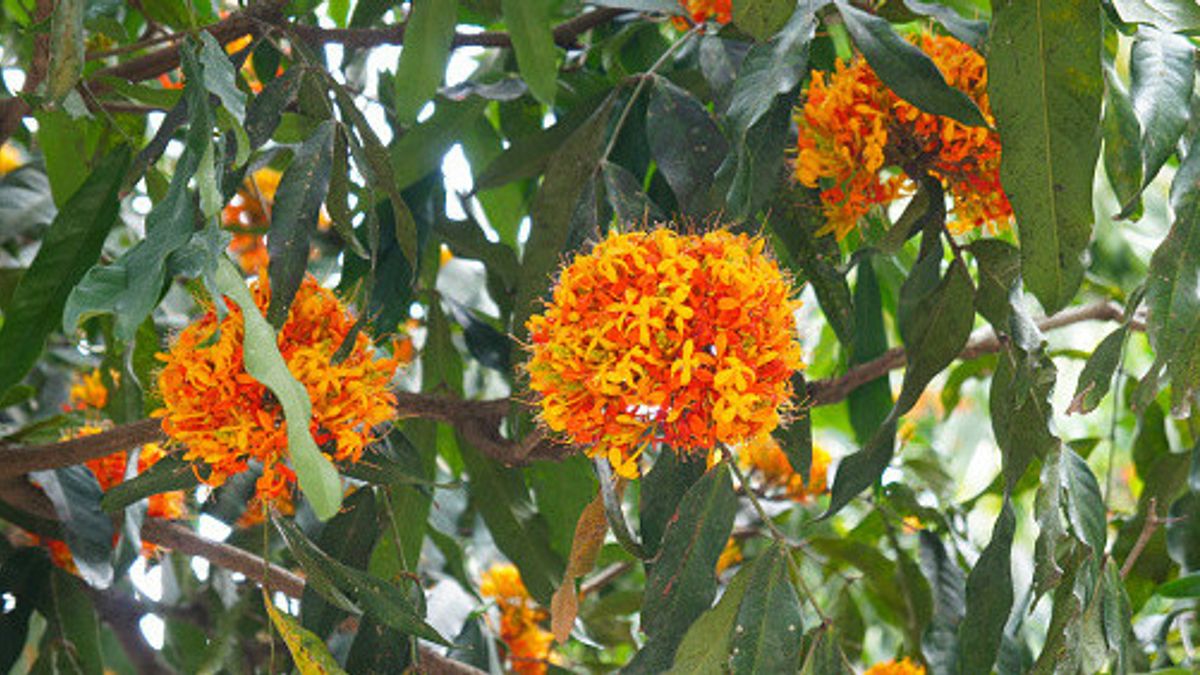YOGYAKARTA – For a sweet sip of flower essence, you can pick a flower and then suck it. Children often do this in their play adventures. But is the sweet taste of Ashoka flowers harmful? Or can Ashoka flowers be eaten not only for a sweet sip?
There are two types of asoka plants, the first is a towering tree and the second is a small tree but often blooms heavily before the rainy season. Ashoka tree, is a plant family Fabaceae. This type of Ashoka plant with small trees has a spreading flower crown. It is also known as the 'handkerchief tree' because of the way its leaves grow and hang like a handkerchief falling in the wind.
Ashoka plant is native to India and western Myanmar. In Ayurvedic medicine, this plant has an important position. Besides being considered to have spiritual significance and is often planted around the skin of Buddhists and Hindus. In the story, it is said that Buddha was born under this beautiful flowering tree. The name 'asoka' itself means 'without sorrow' or 'remover of sorrow' in Sanskrit. Symbolically, this tree symbolizes love.

Also known as Saraca Asoca which is a member of the subfamily Caesalpinaceae. In a study published in 2014 in the Annals Plant of Sciences, researchers from the Department of Biological Sciences, University of Mumbai, India, explored the benefits of the flower of the asoka plant.
Ashoka tree habitat in rainforest areas that can be found throughout India, especially the Hilamaya, Kerala, Bengal, and the entire southern region. As a wild tree, Ashoka is a rare tree because it grows isolated. The tree is like a spruce, small in size, upright, and dark green leaf color. There are various colors of flowers, including bright yellow and red before fall. The natives of Chhattisgarh use this plant in the treatment of gynecological disorders.
For gynecological benefits, usually use the bark. The effects of drinking this herb help reduce ulcers, uterine affections, vaginal discharge, acne, and menorrhagia due to uterine fibroids.
So are the flowers edible? The dried flower buds of the Saraca asoca plant were tested as an antibacterial agent from the methanol extract in the cup. The bacteria tested for control by the flowers of this plant are Salmonella viballerup, Shigella boydii, Escherichia coli, Vibro cholera, Shigella flexneri, and Shigella dyserteriae.
Ashoka flower boiled water is also considered a medicine. Starting from irregular menstruation, treating wounds, to hemorrhagic dysentery.
The English, Chinese, Japanese, Arabic, and French versions are automatically generated by the AI. So there may still be inaccuracies in translating, please always see Indonesian as our main language. (system supported by DigitalSiber.id)













